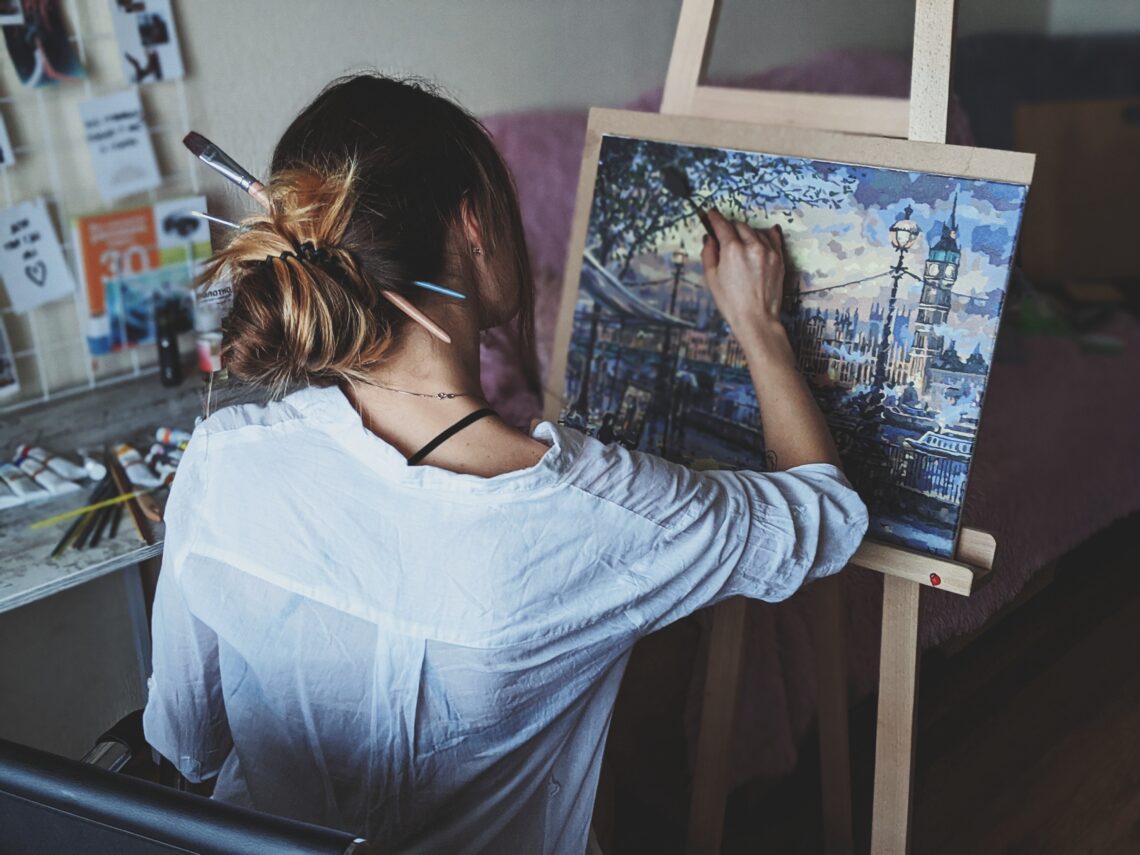
Capitalizing on creation
In February 2020, tickets to the Immersive Van Gogh Exhibit Toronto were made available to purchase for $39.99. Located at 1 Yonge St., digital art projections of some of Van Gogh’s most famous paintings such as Starry Night and Sunflowers were cast upon the 600,000 cubic feet during the 35-minute experience that was offered to guests. The event was so successful that it was brought back to Toronto in 2021.
Vincent Van Gogh was a perfect example of the “starving artist.” Throughout Van Gogh’s life as a painter, he suffered mentally, physically and financially. His work was unknown until March 1901 when 71 of Van Gogh’s paintings were displayed in Paris—11 years after his death.
Even 100 years later with the acceleration of social media and digital technologies, financial insecurity still plagues the lives of many artists today. According to data from the Canadian Association for the Performing Arts, the arts industry took one of the hardest hits during the COVID-19 pandemic with one in four artists reported to have lost their job. As a result, many working artists were forced to reconsider their professions.
Networking and gaining professional connections and experiences in college helped Andrea Sobczak, a 3D animation modeller, find work in her field.
“It definitely feels like you need to know the right people and have a piece of paper just to say something, just to make your way in because otherwise you’re not valued as much,” says Sobczak.
Latika Singh, a communications graduate from York University, says that the arts are an integral part of her being and ability to express herself—but she would rather not work in the commercial art industry. “I keep seeing people making it on Instagram, making it in society, but hardly making it for themselves,” she says.
There is a fine line between creating art and creating content according to Singh, who prefers to view being an artist as more of a lifestyle than a job.“When you create art it’s just coming from you,” she says. “It’s not commission based, it’s nothing, it’s just coming from you, because you want to do it.”
As with many professions, working artists can suffer from burnout and may find that what they once loved to do no longer brings them joy. “I find a lot of my coworkers, or people I’ve met who are artists, if they’re doing the same thing over and over as their job they kind of almost lose their passion for what they initially wanted to do with it,” says Sobczak.
Lack of time is an impediment when it comes to pursuing other creative endeavours according to both Singh and Sobczak. “I make my own designs and try to come up with my own stories. My boyfriend and I have created a storyline to make a short film from. Now we’re trying to make it into a video game,” says Sobczak. “There’s not enough time in the day to actually sit down and do it.”
Singh finds enjoyment and personal fulfillment in activities such as dance, photography and writing, but due to financial constraints she spends most of her time and energy working as a social media specialist.
Fortunately, the many socioeconomic benefits of the arts and culture industry are being recognized by more and more people internationally. A 2016 UK report concluded that cultural engagement helps in shaping more reflective, empathetic individuals. Countries such as Ireland have made huge strides in terms of providing support for artists, including a plan for universal basic income outlined in The Arts and Culture Recovery Taskforce.
Universal basic income takes into consideration the precarious nature of the field and people’s need for financial security. Similar to how the Canadian Emergency Response Benefit (CERB) provided applicants with a basic income of $2000 a month during the height of the COVID-19 pandemic, universal basic income would provide guaranteed regular income to all artists.
In June 2021, the Canada Council for the Arts received a $500 million federal government investment to relaunch the arts, culture, heritage and sports sectors and to resume their public activities after COVID-19. However, many working artists and arts organizations in Canada still rely on a mixture of public, private and earned revenue which can be difficult for individual artists to navigate in a post-pandemic and ever-changing society.
Three tips for selling your art or creative service
Until more countries get on board with universal basic income, there are still ways to make profit as an artist without compromising the personal value of your work.
Use social media mindfully
Instagram can be an incredible platform for artists to showcase and sell their work, as well as gain critical feedback from others. Unfortunately, it can also hinder originality.
Knowing your own limits when it comes to using social media—and logging off if necessary—is important.
Apply for grants
If you have a specific project in mind or are working with a collective group of other artists, it may be worthwhile to scope out some of the government funded grants that are available to artists.
Grants and strategic funds are administered to individual artists, groups and arts organizations, as well as the prizes and fellowships regularly awarded by the Canada Council for the Arts.
The Ontario Arts Council also offers various grants that artists can apply for, including specific grants for “new generation” artists between the ages of 18-30.
Find your niche
There are plenty of specific jobs in the arts industry that require specific skills. You can be a director, an animator or a storyboard artist, among many other careers.
“You don’t have to think you have to paint an amazing portrait to be an artist,” says Sobczak. “People need to know that there’s other ways to be an artist. Not just one dead set way.”
About the author
Amy is a former reporter for Youth Mind. She is passionate about oat milk lattes, any film featuring Adam Driver, and tending to her tiny indoor Basil garden.







